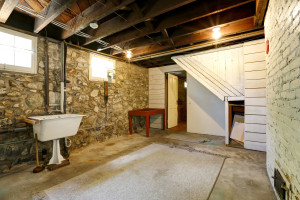 Basement renovations are among the most popular home projects. Many people are turning their unused spaces into extra bedrooms, storage, and even the awesome “man cave.” If you’re thinking of doing the same, check several important factors first. Here are some of them:
Basement renovations are among the most popular home projects. Many people are turning their unused spaces into extra bedrooms, storage, and even the awesome “man cave.” If you’re thinking of doing the same, check several important factors first. Here are some of them:
Waterproof Like Crazy
Waterproofing a basement is the single most important job related to its renovation. If you already have a sump pump that helps with seepage issues, it’s not enough. Industry expert American Basement Solutions says you’re better off having both a battery backup (in case of blackouts) and a second pump to complement your current pump.
Apart from checking on the sump pump, closely inspect the basement’s structure for anything unusual. Test for excess moisture using 2-foot squares of plastic sheeting. Tape these sheets to the floor and walls, wait for several weeks, and see if there’s condensation underneath. If yes, it means the foundation needs to be sealed. If you see water droplets on top of the sheet, the basement must be dehumidified.
Headroom, Headroom, Headroom
Unless you’re looking to turn your basement into a miniature extra storage area, you’d need enough headroom. Most of the time, local building codes require a finished basement’s ceiling to be seven feet high. This recommendation is not that ideal, however. Experts believe that a ceiling below 7’9” can still feel cramped.
Should the basement lack the ideal ceiling height, there’s a workaround. You can choose to either dig out and lower the floor, though such a job can be expensive. If the contractor permits, you might be able to ask if they can move the ducts and other piping installed in your basement for more space. Still, the absolute bare minimum vertical space you’ll need is seven feet.
Plan Exits
Don’t always rely on the contractor to lay out the floor plan for you. Remember that all local building codes require a comprehensive exit route in case of emergency; more so in bedroom areas. For instance, a specific window must be big enough for anyone to squeeze through.

